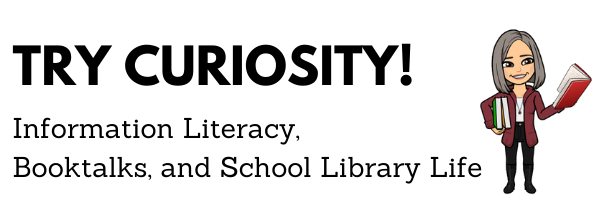 |
| Photo |
This was a great way to see quickly which students are understanding the concept. Here are the examples we used.
Along the way, we talked about the benefits and the
pitfalls of primary sources. A person who writes about his or her own experience or witnesses a particular event does not necessarily write it accurately or truthfully. One sharp cookie in the room brought up the example of Lance Armstrong's autobiography; it's a primary source but it also omits details about the truth.
We talked about how primary and secondary sources need to be used together and evaluated carefully to help us get as close to the truth as possible.
As we work more with primary sources, we will be practicing evaluation according to guidelines found here:
- Time and Place
- Bias
- Analytical Questioning
Next, we looked at photographs from
.JPG) |
| What questions do you have? |
We established that the act of questioning is what begins the research process. Starting with primary source documents, like pictures, is a powerful way to begin finding the questions that most interest us.
Full lesson plan here.
Grade 7: Guiding Question - What are "subjects" and how can we narrow by subject to find books?
Students came looking for mysteries since they are studying that genre in their class. We talked about subjects as topics that can be found within the genre. Students already know how to narrow by Interest Level and by Reading Level. Adding a Subject limiter shows them the types of mysteries we have.
 This is fun for students because they begin to see how they can match their interests to their search for a book. Mysteries + dogs? Mysteries + murder? Mysteries + siblings? When there are hundreds of books in one genre, narrowing by subject can really help everyone find something good!
This is fun for students because they begin to see how they can match their interests to their search for a book. Mysteries + dogs? Mysteries + murder? Mysteries + siblings? When there are hundreds of books in one genre, narrowing by subject can really help everyone find something good!In other news:
We have a new video on our digital signs. It's inspired by the P!nk song, "Just Give Me a Reason" and it targets high school students who have lost the love of reading for pleasure.
(Our signs play "silent" so I didn't put the real song as background - too complicated!)
We have a new YouTube channel where you can follow our videos.



Thank you!! Feel refreshed with new ideas for Primary/Secondary resources... Starting up discussion on them with my Y6 students this week...
ReplyDelete:)